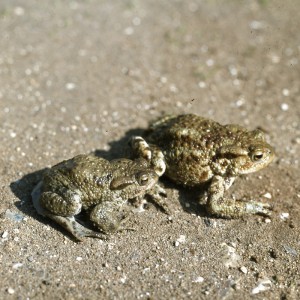 There are many wildlife organisations you can join whether they be national, regional or local. Across the board they cover all aspects of wildlife but if I had to recommend just one to readers then it would have to be the Highland Biological Recording Group. I contemplated their work when I attended their Spring Meeting last month in the Community School in Strathpeffer. The people in the room, over 35 of them, were from all parts of the Highlands from Lochinver in the north to Skye in the south west. There were several younger people in the audience, and speaking to address the meeting, which I was pleased to see. As in many other organisations, there has been a lack of youngsters getting involved in recent years and these people are essential to make sure the good work to safeguard wildlife continues in the future. The start of the meeting was informal over coffee and the chance for members to catch up on news and exchange wildlife ideas. I had an interesting discussion with someone from Lochinver who said there had been a distinct lack of toads this spring but plenty of frogs. That has also been the case in my experience this year so what has been happening?
There are many wildlife organisations you can join whether they be national, regional or local. Across the board they cover all aspects of wildlife but if I had to recommend just one to readers then it would have to be the Highland Biological Recording Group. I contemplated their work when I attended their Spring Meeting last month in the Community School in Strathpeffer. The people in the room, over 35 of them, were from all parts of the Highlands from Lochinver in the north to Skye in the south west. There were several younger people in the audience, and speaking to address the meeting, which I was pleased to see. As in many other organisations, there has been a lack of youngsters getting involved in recent years and these people are essential to make sure the good work to safeguard wildlife continues in the future. The start of the meeting was informal over coffee and the chance for members to catch up on news and exchange wildlife ideas. I had an interesting discussion with someone from Lochinver who said there had been a distinct lack of toads this spring but plenty of frogs. That has also been the case in my experience this year so what has been happening?
The Group’s magazine “The Highland Naturalist” was available for members at the meeting and this excellent magazine had the usual fascinating range of subjects. As always, these varied from less known species such as a rare cranefly to wood pigeons and a very wide range in between. This magazine gives a very good cross-section of wildlife in the Highlands and the activities of the Group. The membership fee would be worth it just for the magazine alone. Other subjects for articles included a resume of the field trips of 2013, the usual contribution from wildlife around the Lochinver area and records of the rare dragonfly, the keeled skimmer, on Skye. I was particularly interested in a resume of the wildlife of Cape Wrath, that very remote corner of north west Sutherland that in the past has so often been overlooked. There were records from Cape Wrath of butterflies, plants and birds, the latter included old and more recent records of sea eagles.
Field trips have always been an important part of the Group’s activities and there were several for 2013 and more planned for the current year. It seems that, increasingly, remoter areas have been visited such as islands off the west coast, some of which have been under-recorded before. There are still plenty of more well known and accessible sites to look at such as, in 2014, Culbin and Rothiemurchus. There are always leaders for such trips who are very keen on helping newcomers and also, most important, helping people with identification. Whilst such field trips gather important information about the various sites, they are also social events where people can enjoy wildlife, which is an important aspect. Such field trips are as significant as indoor meetings and the various publications the group has produced.
The records the Group makes form a valuable input into the UK’s national recording systems and any record people send in will be passed to the appropriate recording base, local and national. Such recording can now be accessed by people by contacting the website mentioned at the end of this article. Another important element of such recording has been the Group’s publication of distribution atlases. These have covered, amongst others, the butterflies and mammals, and are still available. Contact HBRG on www.hbrg.org.uk.
Tags: highland wildlife
